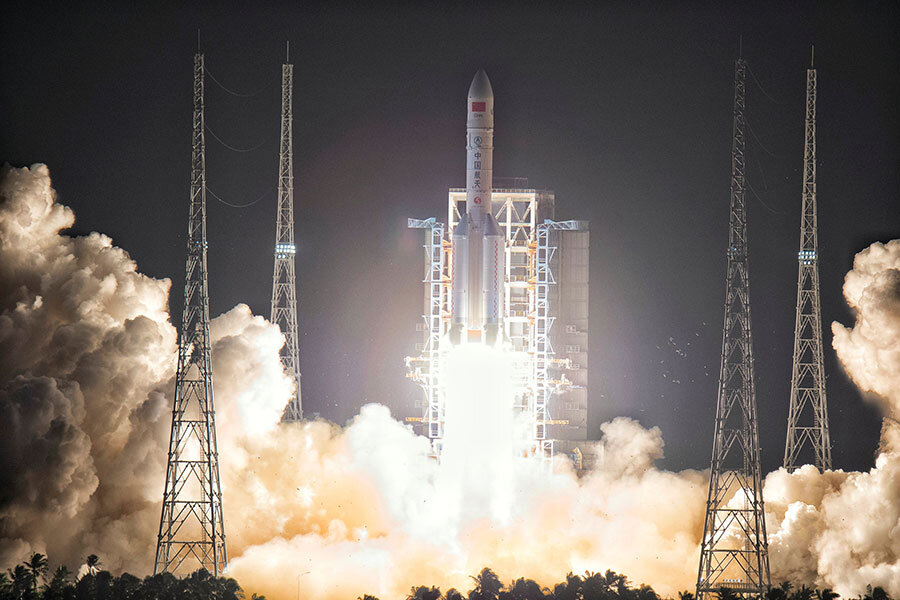With another rocket success, China solidifies place in space industry
Loading...
A nation’s dream of journeying to Mars took flight in Wenchang, China, on Thursday. For now, though, the latest contender in the space race is sticking a little closer to home.
The new Long March 5 rocket launched successfully from the Wenchang Space Launch Center. The rocket measures 187 feet, making it the largest produced by China. It can carry 25 tons of payload into low-Earth orbit. The rocket carried a satellite that will be used to test a variety of technologies, from observing space debris to electric propulsion.
The rocket is an integral part of the growing Chinese space program. It lays the groundwork for future missions, such as China’s plan to have a fully-crewed space station by 2022 and send an uncrewed mission to Mars some time between 2024 and the end of the decade.
"Its successful launch has propelled China to the forefront of the world in terms of rocket carrying capacity, and marks a milestone in China's transition from a major player in space to a major power in space," the ruling Communist Party’s Central Committee and the Central Military Commission wrote in a letter, according to Chinese news agency Xinhua.
Excluded from participating in the International Space Station project, China has been assiduously growing its own space program. The country hopes to become an “aerospace power,” President Xi Jinping said, according to NBC News.
Though the US government has expressed concerns that China’s space program is directed against other countries’ national defenses, limiting their ability to respond in a crisis, China maintains it is using the space program for peaceful purposes.
There have been setbacks, with China’s Jade Rabbit moon rover experiencing severe technical difficulties. But the program has been largely successful: Each succeeding innovation builds on the advances made – or lessons learned – with older technologies. The Long March 5, for instance, features the more environmentally-friendly fuel mix pioneered with the Long March 7.
“The more sustainable, powerful fuel it used ... is composed of a mix of kerosene and liquid oxygen, rather than the more toxic hypergolic propellants China used in its previous rockets,” The Christian Science Monitor’s Ben Rosen wrote of the Long March 7 in June.
Some say that the Chinese space program could grow to rival that of the US. In fact, when the International Space Station reaches the end of its life, China will likely be the only national government with a space station in low-earth orbit.
National governments aren’t the only ones in the space race, either. In the US, the government is encouraging commercial spaceflight companies like SpaceX, Bigelow Aerospace, and Axiom Space to take over low-earth orbit missions, freeing NASA up to focus on Mars. SpaceX, for one, is also pushing toward Mars.
For now, SpaceX may be China’s closest competitor. Elon Musk’s company is working on the Falcon Heavy, which is designed to carry a payload more than twice as great as the Long March 5. China, meanwhile, is working on a new rocket that could carry up to 100 tons, Tian Yulong, the program’s chief engineer, reportedly said at a news conference.
Material from the Associated Press and Reuters contributed to this report.








